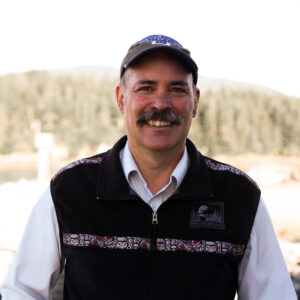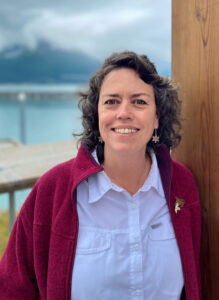
W. Scott Pegau wasn’t born in Alaska, but it’s the place that feels like home.
When Pegau was a kid, his family moved to Alaska so his dad could attend the University of Alaska Fairbanks, or UAF. His dad was later hired by the Alaska Department of Fish and Game, so the family stayed.
After graduating from high school in Nome, Pegau joined the Navy for 6 years, then headed to his dad’s alma mater, UAF, and later Oregon State University for graduate school. Pegau chose to major in physics.
“I avoided the natural sciences,” Pegau says. “So we both got a good laugh, because when I did come back up to Alaska, I was hired as a fisheries biologist.”
His journey from physics to fisheries is what makes his background particularly helpful in his role as a member of the Council’s Scientific Advisory Committee.
Atmospheric physics to ocean physics
For a while after undergrad, Pegau worked with atmospheric models at UAF’s Geophysical Institute. He liked the work but found that he missed being close to the ocean. He also found himself interested in the physics of light.
He combined these interests in a Ph.D. in oceanography from Oregon State University, where he focused on how light interacts with ocean water. He also studied how to use remote sensing technologies to gather ocean data.
He uses the colors of the sky and the ocean to explain how light can provide information. Blue light waves scatter across the atmosphere when they encounter particles.
“So when you look up, you see blue.”
He says sunrises and sunsets appear red because red light waves make it far enough into the atmosphere to reach the clouds. Pegau says the ocean appears blue for a different reason.
“Blue light has the greatest chance of reflecting back out of the water because it’s least absorbed.”
He says the light interacts differently according to what’s in the water. Particles or features in the water such as sediments or plankton can be identified by examining how light waves are reflected or absorbed.
“Each particle has a different kind of scattering characteristic,” he says. “If you’re trying to figure out how light transmits through the ocean, you’re trying to put those two things together: How is it being absorbed and how is it being scattered?”
Over the years, he traveled all over the northern hemisphere studying the optical properties of the oceans and looking at remote sensing methods to gain more understanding of the ocean, its currents, and inhabitants.
North to Alaska
In the early 2000s, he came back to a job at Homer’s Kachemak Bay Research Reserve. Finally settling in Cordova, he has coordinated and managed research projects for the Oil Spill Recovery Institute for the last 18 years.
Born out of the aftermath of the Exxon Valdez oil spill, the institute funds research projects that improve oil spill response and seeks to better understand spills’ impacts to people and wildlife.
He’s also authored or co-authored papers on topics including remote sensing of spilled oil, the circulation of ocean currents, and the effects of crude oil on herring. The herring fishery in Prince William Sound disappeared a few years after the Exxon Valdez oil spill and has never fully recovered.
As he now prepares to retire, he’s excited to finish up a study on how the atmosphere and ocean conditions affect herring populations.
“I’ve really wanted to work on this particular project,” Pegau says. “I’m trying to determine what makes for a good herring year. Different factors come into play. Are the winds holding the larvae near the shore? Is the food the right size or the right type for the larvae?”
Volunteering for the Council
Pegau has been an ex officio member of the Council for many years as part of his work for the institute. He joined the Scientific Advisory Committee this past year, answering the committee’s call for an oceanographer.
He says he’s always appreciated the committee’s commitment to good science. He says their work is important for keeping Prince William Sound safe from spilled oil.
“If you want to protect resources, you better have good information.”



